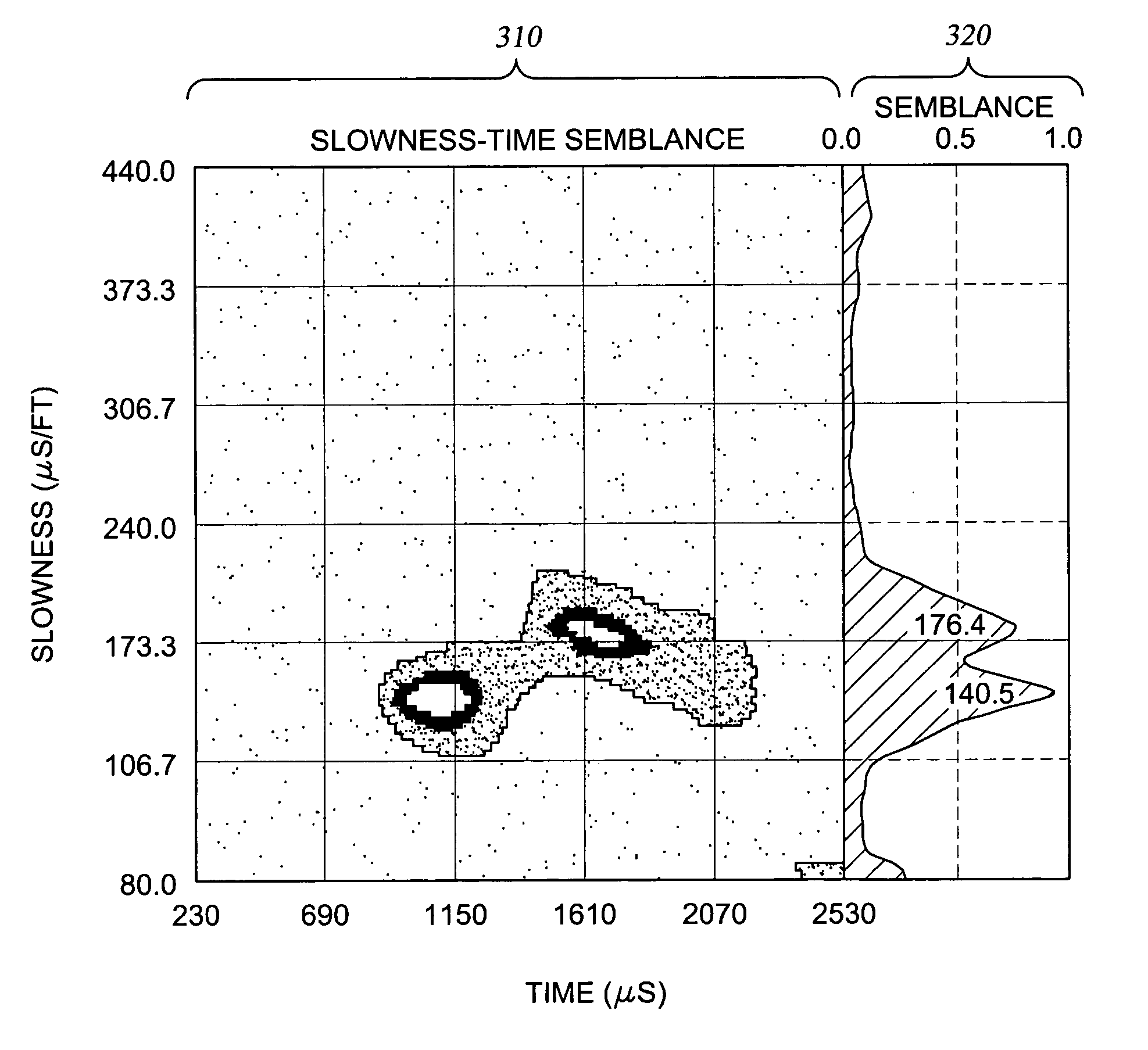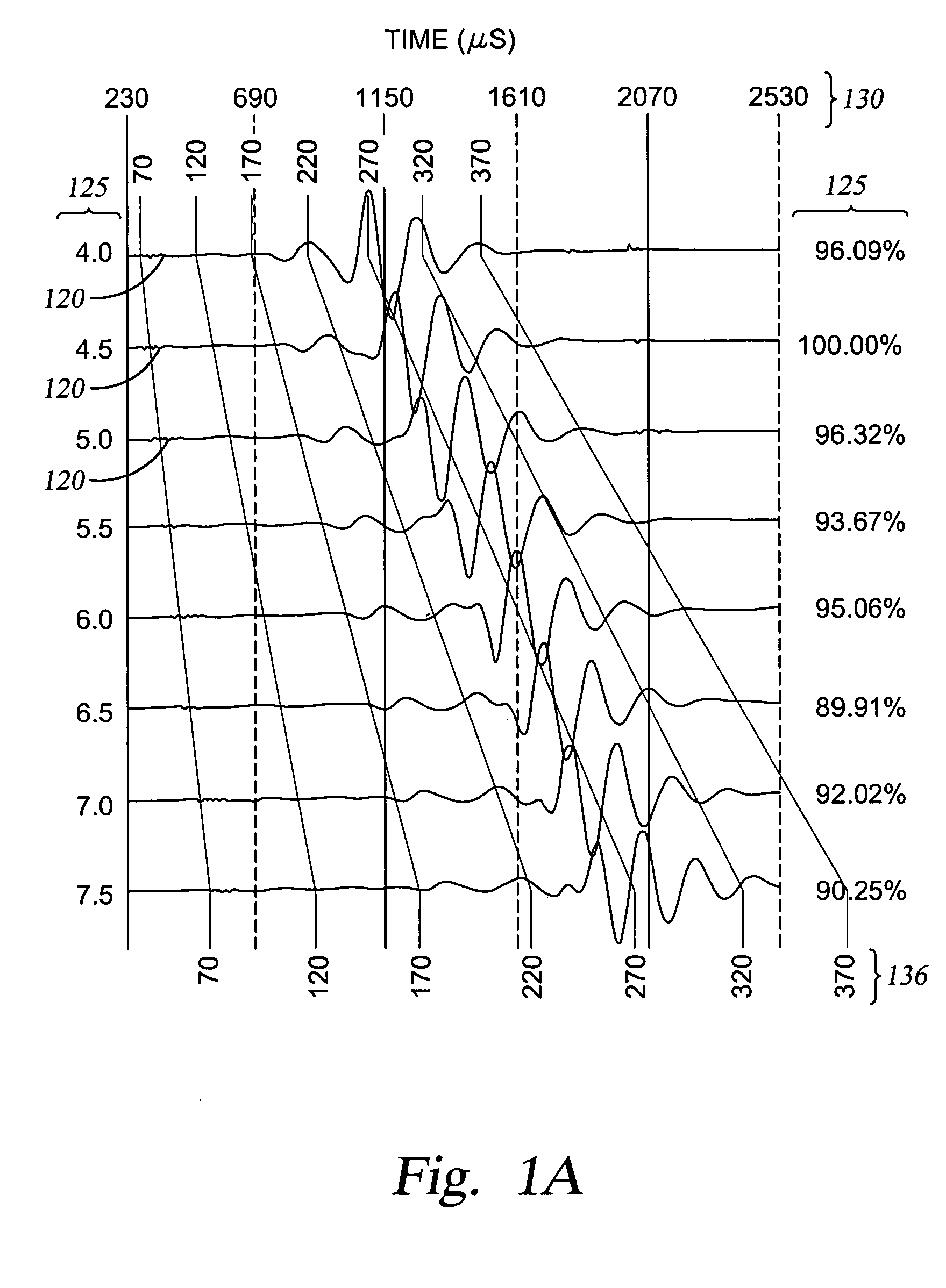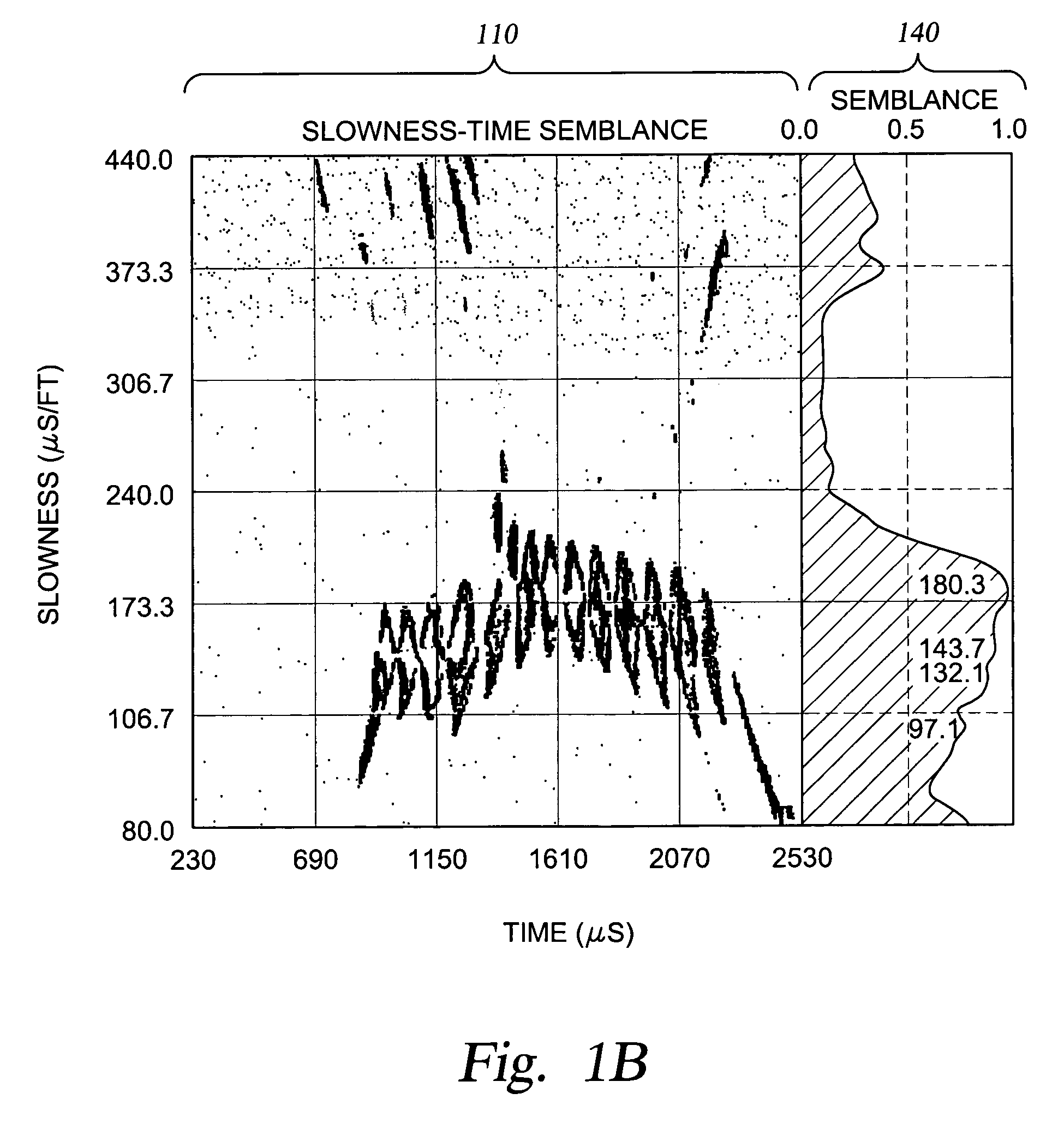Acoustic signal processing method using array coherency
a signal processing and array coherency technology, applied in the field of acoustic borehole tool processing of information, can solve the problems of limited downhole computing power, slow penetration rate, and data acquisition still far exceeding the highest data transmission rate in the mud
- Summary
- Abstract
- Description
- Claims
- Application Information
AI Technical Summary
Benefits of technology
Problems solved by technology
Method used
Image
Examples
Embodiment Construction
[0023] An acoustic logging tool generally includes several receivers axially spaced along the logging tool. An acoustic transmitter generates an acoustic wave that propagates along the well bore and is detected by the receivers. FIG. 1A shows an example of the data collected by an acoustic logging tool from in response to a the wave generated by the transmitter. Each of the waveforms 120 is recorded by a corresponding receiver as a function of time 130 since the transmitter firing. The receivers are each associated with a distance 125 from the transmitter. After recording the waveforms, the logging tool typically normalizes the waveform so that they have the same signal energy, and FIG. 1A expresses the normalization factor as a percentage of transmitted signal energy 135.
[0024]FIG. 1A also shows a graduated series of sloping lines to indicate the relative waveform delays to be expected for given slowness values 136. Slower waves (those having larger slowness values) take longer to...
PUM
 Login to View More
Login to View More Abstract
Description
Claims
Application Information
 Login to View More
Login to View More - R&D
- Intellectual Property
- Life Sciences
- Materials
- Tech Scout
- Unparalleled Data Quality
- Higher Quality Content
- 60% Fewer Hallucinations
Browse by: Latest US Patents, China's latest patents, Technical Efficacy Thesaurus, Application Domain, Technology Topic, Popular Technical Reports.
© 2025 PatSnap. All rights reserved.Legal|Privacy policy|Modern Slavery Act Transparency Statement|Sitemap|About US| Contact US: help@patsnap.com



